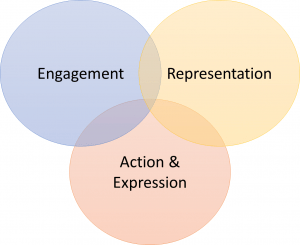Crafting Your Teaching Statement

A teaching statement is a 1-2 page reflective essay describing your approach to teaching students in your discipline. Teaching statements may be written as self-reflection essays or to introduce teaching portfolios, but are often requested as part of the academic job packet. The following introduction will help you get started on crafting your own teaching statement for your academic job packet.
Purpose
As part of the academic job packet, the purpose of the teaching statement is to provide evidence of your teaching practice and your beliefs about teaching to the search committee. Teaching statements may also be used to help you reflect on and evaluate your teaching practice.
Audience
The primary audience for your teaching statement is the search committee. The search committee consists of faculty who might not be experts in teaching pedagogy and learning science. Some of the faculty might also be from different disciplines than your own. This means that you will need to convey your teaching practice and beliefs about teaching in a way that non-experts could easily understand.
The search committee’s goal is to hire a successful candidate. To accomplish this goal using the teaching statement, the search committee wants to determine how you address the challenges of teaching in your discipline and what it is like to be a student in your classroom. According to a survey of institutions across the U.S. on how search committees evaluate teaching statements (Kaplan, Meizlish, O’Neal, & Wright, 2008), search committees are looking for specific information about you, the candidate, in a high quality document. In the content of the document, the search committee is looking for evidence that you understand the differences between learners, can reflect on your teaching, and that you value teaching. In the writing of the document, search committees want to see that your teaching statement is well-written, readable, provides evidence of your teaching practice, and is centered on students.
When crafting your teaching statement, it is important to first investigate the department and institution to which you are applying to help you cater your teaching statement to the teaching challenges of that department. The following areas may be useful to research online:
- Institution’s Carnegie classification
- Average classroom sizes for courses in your discipline at this institution
The Carnegie classification can inform you of what the expected teaching load might be at that institution. A teaching load refers to how many courses you are expected to teach in the fall and spring semesters. For example, a 2/2 teaching load means that you teach two courses in the fall and two courses in the spring. Doctoral universities tend to have smaller teaching loads, ranging from 2/1 to 3/2. Baccalaureate and associate’s colleges will have higher teaching loads, such as a 4/4.
The Carnegie classification and average classroom size can give you an idea of some of the teaching challenges you could encounter. For example, at an R1 institution, you may be expected to teach large classes. Some faculty might struggle with getting students engaged in large classes, managing their time grading assignments or tests, and getting to know their students as individuals. In baccalaureate colleges, you might be expected to teach smaller classes. Some faculty might struggle with leading effective discussions in smaller classes and handling students who come unprepared to discuss the materials in class.
Content
Teaching statements address a variety of content areas. The following prompts will help you develop the content in your teaching statement.

Beliefs about Teaching
“Why do I teach?”
Your teaching statement should include your beliefs about teaching and what motivates you to teach. These beliefs should be your personal views rather than restating teaching and learning concepts.

Learning Goals
“What are my goals for student learning?”
The learning goals for your students are the most important discipline-specific knowledge and skills that you want your students to take away from your courses. Your learning goals can be content or skills you think are important for your students to master as well as broader goals (e.g., science writing skills) for students in your discipline. If you need some assistance creating learning goals for your students, completing the Teaching Goals Inventory can help you identify what skills you think are important for your students to be able to do after completing your course.
You may also want to address the challenges you have when teaching or the challenges your students encounter when working towards your learning goals. Some common faculty challenges include engaging students in large classes, leading effective discussions, handling underprepared students, and managing conflict in the classroom.

Teaching Methods
“How could I teach this?”
Teaching methods are techniques you use to either help your students achieve your learning goals or address your teaching challenges. Your teaching methods should be aligned with your learning goals and/or teaching challenges. For example, if you want your students to engage in higher-level learning (e.g., create), they should practice higher-level skills (e.g., designing a new transportation system in Atlanta).

Assessments of Learning
“How would I know my students learned this?”
Assessments of learning are the ways you measure student learning in relation to your learning goals. Your assessments should match both your learning goals and your teaching methods (e.g., a graded presentation on their new transportation system design).

Using the three Universal Design for Learning principles (CAST, 2018) can help you foster an inclusive learning environment.
Inclusive Learning
“What does it feel like to be a student in my class?”
Inclusive learning environments are those where all students’ perspectives and experiences are valued and respected. Your learning goals, teaching methods, and assessments of learning should illustrate how you create and nurture an inclusive learning environment in your classroom.

Teaching Effectiveness
“How do I know my teaching is effective?”
Some job ads may request evidence of your teaching effectiveness. Evidence of teaching effectiveness includes student evaluations, peer evaluations, sample syllabi/exams/assignments, or teaching awards.
Additional Writing Prompts
Ruggeri and Woods (2016) analyzed numerous teaching statements and extracted a number of themes and writing prompts from their analysis. If you need additional help developing the content of your teaching statement, complete some of the prompts in this document.
Organization
Your teaching statement can be organized as a five-paragraph essay:
- Introductory paragraph: Start with your beliefs about teaching and introduce your three learning goals.
- Three supporting paragraphs: For each supporting paragraph, discuss the teaching methods and assessments of learning you use to help your students achieve that learning goal within an inclusive learning environment.
- Concluding paragraph: Conclude with a reflection on your teaching practice, including future teaching development, courses you might teach, and measures of your teaching effectiveness.
Style
Your teaching statement should be woven into an overall personal narrative about your teaching practice. It should also be written concretely, clearly, and concisely. Use 10-12 pt. serif font, single-spacing, and white-space between paragraphs to make your document easier to read.
Because this document may be read by faculty who are not experts in teaching pedagogy and learning science, avoid using technical jargon and use non-specialist terms instead.
Additional Resources
Schedule a consultation with CTL staff to get feedback on a draft of your teaching statement.
Get more detailed information about teaching statements from the CTL website.
Angelo, T. A., & Cross, K. P. (1993). Teaching goals inventory. In Classroom assessment techniques: A handbook for college teachers. San Francisco, CA: Jossey-Bass.
Carnegie Commission on Higher Education (2015). The Carnegie classification of institutions of higher education.
CAST (2018). Universal Design for Learning Guidelines version 2.2.
Kaplan, M., Meizlish, D. S., O’Neal, C., & Wright, M. C. (2008). 16: A research‐based rubric for developing statements of teaching philosophy. To Improve the Academy, 26(1), 242-262.
Ruggeri, N., Baiduc, R., & Woods, L. (2016). Analyzing teaching statements in the context of a graduate teaching development program. Presented at the Professional & Organizational Development Network in Higher Education Conference, Louisville, KY.
Vanderbilt University Center for Teaching (2018). Teaching statements.




